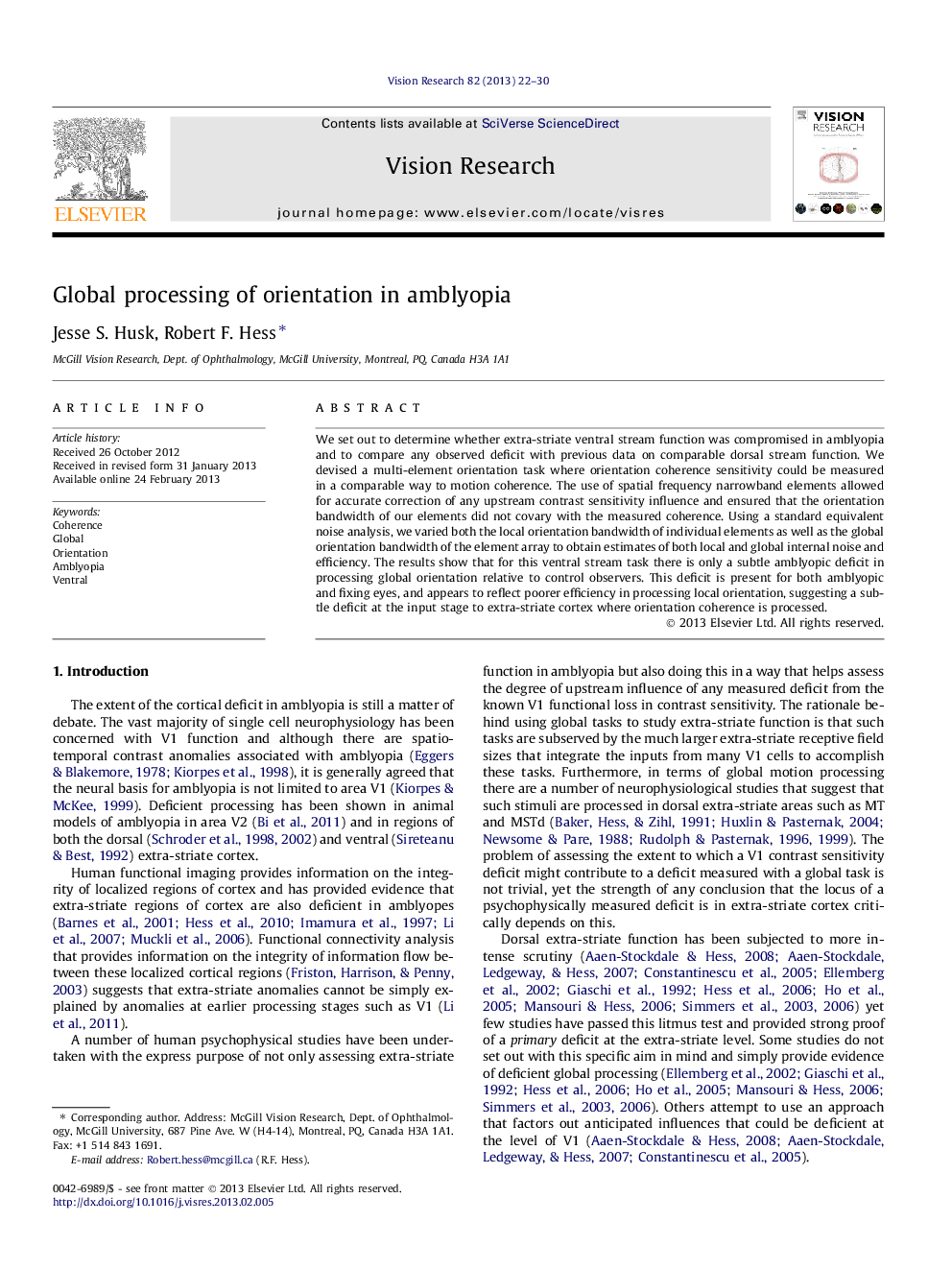| Article ID | Journal | Published Year | Pages | File Type |
|---|---|---|---|---|
| 4033814 | Vision Research | 2013 | 9 Pages |
We set out to determine whether extra-striate ventral stream function was compromised in amblyopia and to compare any observed deficit with previous data on comparable dorsal stream function. We devised a multi-element orientation task where orientation coherence sensitivity could be measured in a comparable way to motion coherence. The use of spatial frequency narrowband elements allowed for accurate correction of any upstream contrast sensitivity influence and ensured that the orientation bandwidth of our elements did not covary with the measured coherence. Using a standard equivalent noise analysis, we varied both the local orientation bandwidth of individual elements as well as the global orientation bandwidth of the element array to obtain estimates of both local and global internal noise and efficiency. The results show that for this ventral stream task there is only a subtle amblyopic deficit in processing global orientation relative to control observers. This deficit is present for both amblyopic and fixing eyes, and appears to reflect poorer efficiency in processing local orientation, suggesting a subtle deficit at the input stage to extra-striate cortex where orientation coherence is processed.
►A new test of global orientation processing designed to mirror that already used for global motion processing. ► Comparison between ventral and dorsal deficits in amblyopia. ► Developmental disorders compromise dorsal function more than ventral function. ► “local” and “global” noise manipulations within the context of an equivalent noise analysis. ► First use of narrowband elements to disambiguate bandwidth and coherence.
